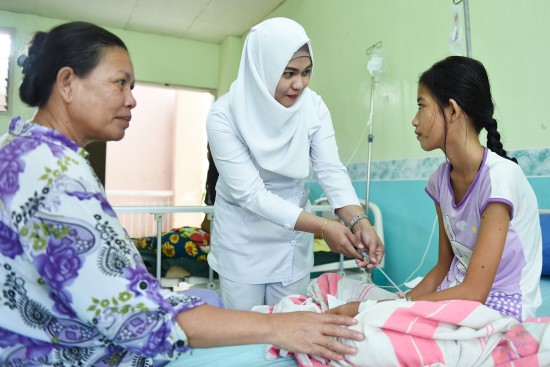
12 Mar USAID-funded HRH2030 Program Introduces Workload Indicators of Staffing Need in the Philippines
On February 20, 2019, President Rodrigo Duterte signed the Universal Health Care Act in the Philippines. A milestone legislation for the nation, the law aims to address a myriad of health system challenges, including shortages of qualified health professionals, health human resource distribution imbalances, and variations in health service quality.
In support of the Philippine government’s efforts to bolster human resources for health (HRH), USAID through the HRH2030 program works with the Department of Health to strengthen the country’s health workforce by improving health planning, management and development, and advancing the use of data for HRH decision-making at the central and regional levels. HRH2030 introduced the World Health Organization’s Workload Indicators of Staffing Need tool and methodology to the Philippines’ health sector as an approach to discern the nation’s HRH needs and next steps.
“Currently, the Philippines uses outdated staffing standards based on population density ratios. The Workload Indicators of Staffing Need presents an evidence-based method for determining staffing needs and planning strategies to relieve workload pressure.”
– Dr. Kenneth Ronquillo,
Director of the Department of Health – Health Human Resources Development Bureau
HRH2030’s interventions are timely. One of the objectives of the Universal Health Care Act is to ensure the recruitment and retention of the health workforce is based on population health needs. The Workload Indicators of Staffing Need data and results will contribute to evidence-based HRH planning and to updating staffing standards for local service delivery networks (the provincial or city-wide groups of public and private health facilities and providers that offer coordinated health services).
The Workload Indicators of Staffing Need tool assesses workload components, including activities and time standards, of health workers at a given facility to provide a complete picture of the daily workload pressures that health workers currently face. This way, adequate numbers of health workers of a particular type can be assigned. This is especially necessary for determining the health workers (namely nurses, physicians, midwives, and medical technologists) required to deliver accessible and high-quality tuberculosis and family planning services in geographically isolated and disadvantaged areas of the Philippines. Through optimized health worker staffing, health services will improve and so will health outcomes.
With guidance and leadership from Dr. Mollent Okech, human resources for health professional and international expert on the tool, HRH2030 facilitated a series of activities to build buy-in and understanding of the Workload Indicators of Staffing Need tool and methodology with central, regional, and provincial health leaders for planned application in the field. “The energy and enthusiasm of the [Department of Health] team has been encouraging as all of them want to know how to use the tool… HRH2030 acted as a catalyst in rethinking the HRH position in the implementation of the Universal Health Care law,” Okech remarked.
After pilot testing and finalizing data collection tools, HRH2030 and its local partner Alliance for Improving Health Outcomes (AIHO) initiated data collection at 18 service delivery networks throughout nine regions in the Philippines. Fourteen data coordinators are now working with the Department of Health and local government staff to gather the required data from more than 170 health facilities.
With the Universal Health Care Act’s implementing rules and regulations due in 90 days from its signature, HRH2030 is quickly analyzing the data to determine an evidence-based staffing model for the service delivery networks based on population health need.
Okech added, “The Workload Indicators of Staffing Need will help plan for the right numbers of health workers who will ensure the realization of universal health care.”
Photo: Ayesha Ahamad, the head nurse in Datu Halun Sakilan Memorial hospital, gives out medication to patients as part of her daily routine in the hospital. (Blue Motus, HRH2030)





